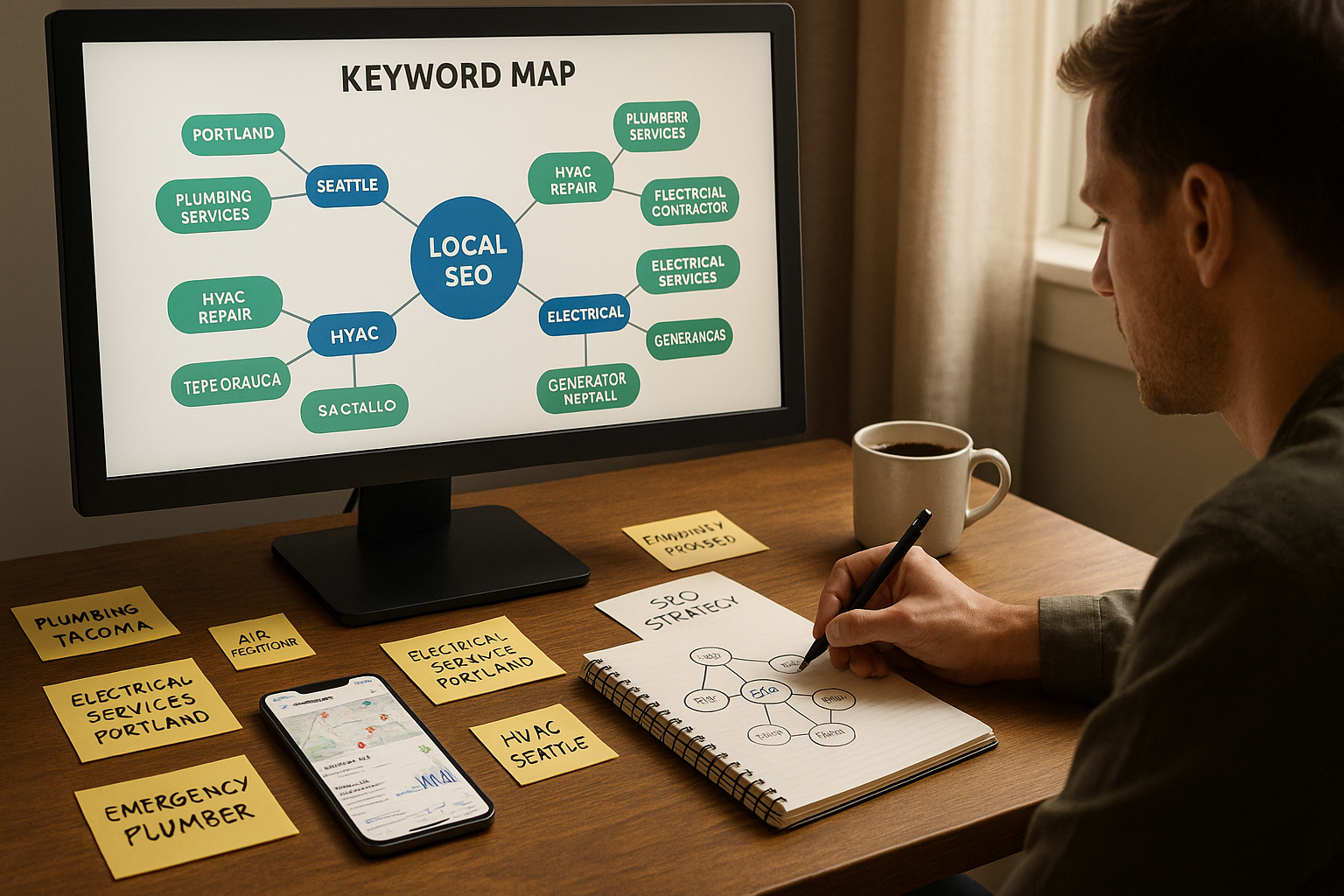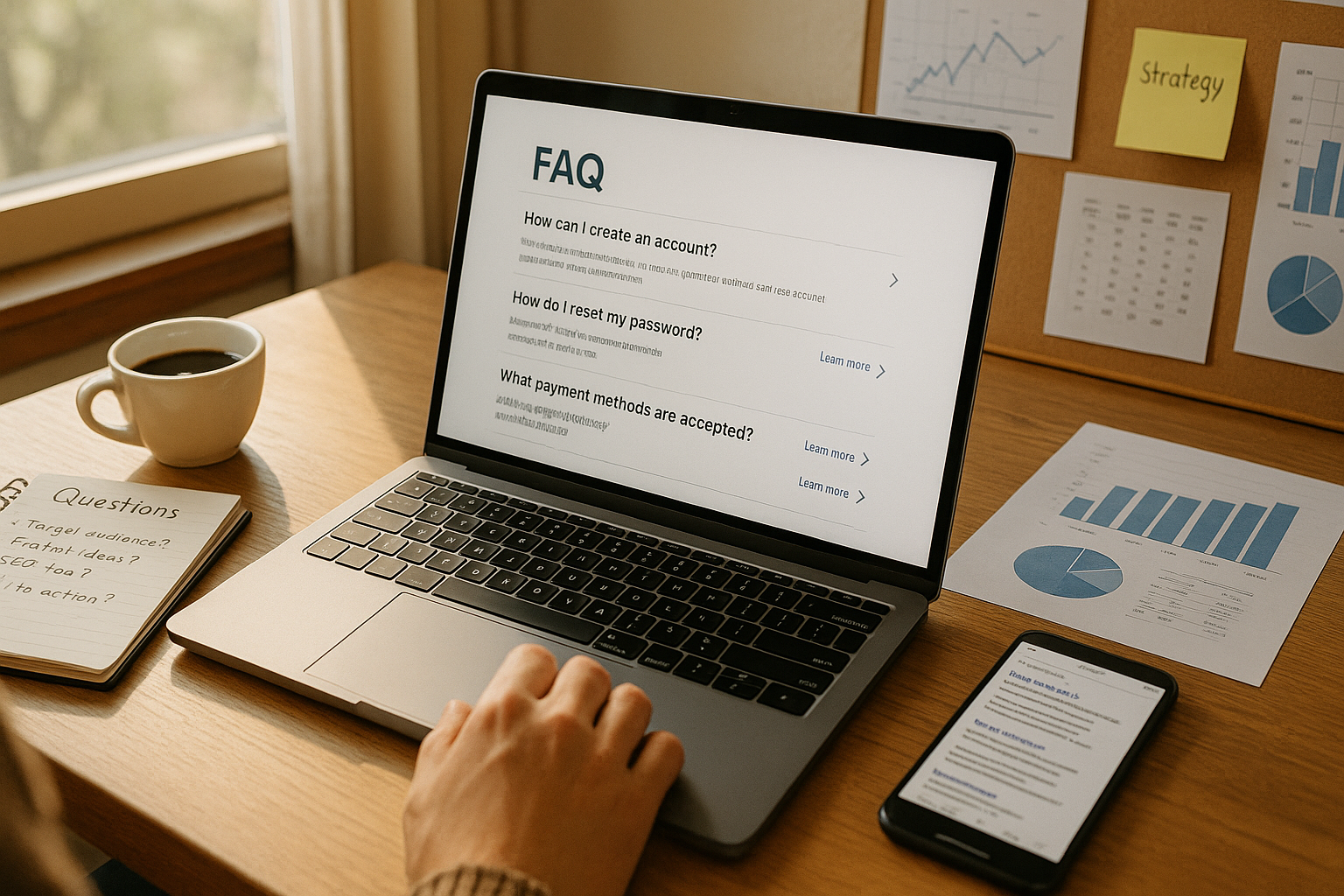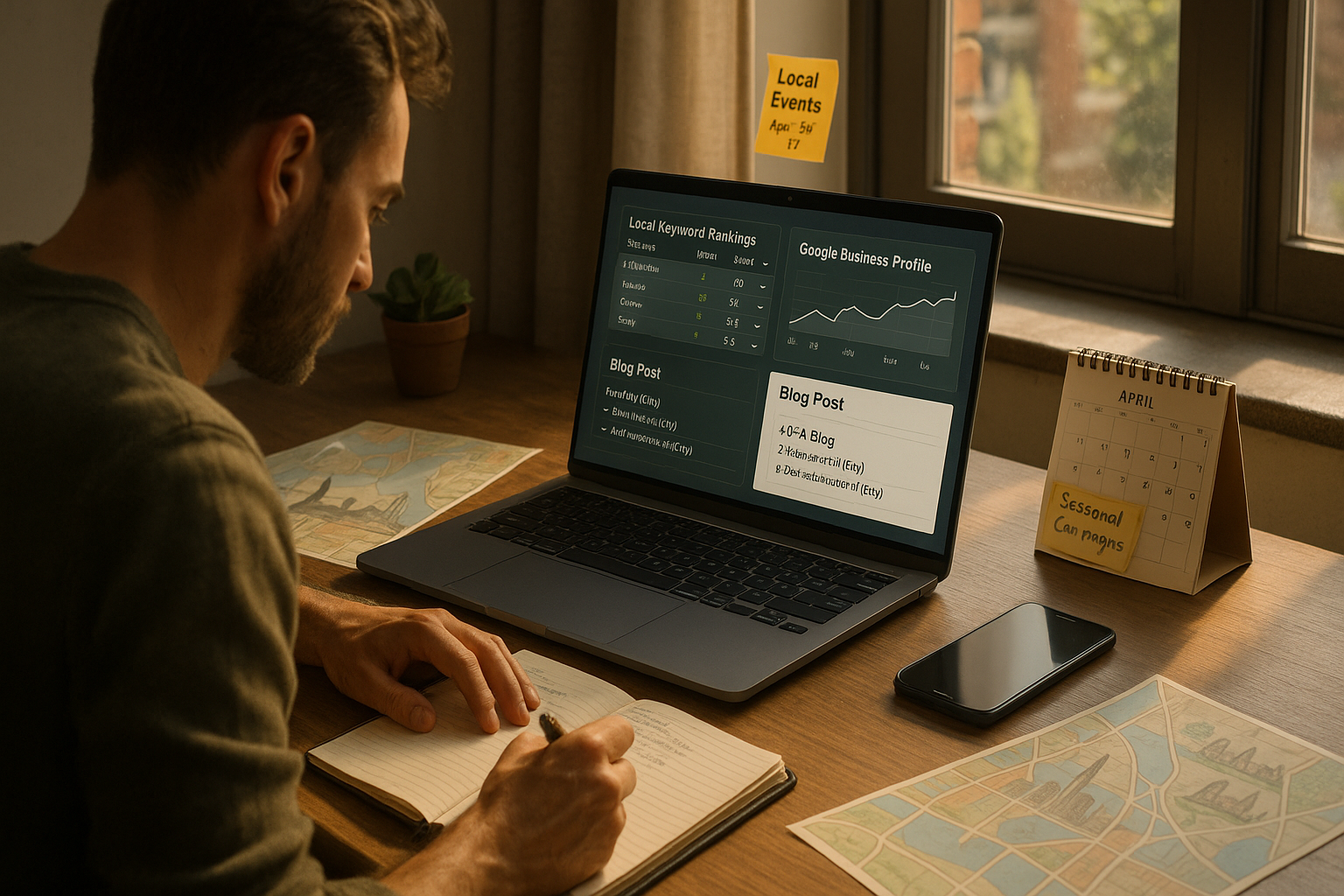How does Smart Bidding work in Google Ads?
For small businesses advertising on Google, one of the biggest challenges is managing bids efficiently. You want your ads to reach the right people — without wasting money on clicks that don’t convert. That’s where Smart Bidding comes in.
Smart Bidding is Google’s AI-powered approach to automated bidding. It uses machine learning to optimize your bids in real time, helping you achieve specific goals like conversions, sales, or return on ad spend (ROAS). Rather than manually adjusting bids for every keyword or audience, Smart Bidding takes care of the heavy lifting — learning from vast amounts of data and adjusting your bids automatically to get the best possible results.
But how does it actually work? And more importantly, how can small businesses use it strategically to get the most value out of their ad spend?
In this blog, we’ll break down how Smart Bidding functions, explore its main strategies, and show how to use it to improve efficiency, maximize conversions, and align your ad campaigns with your business goals.
Understanding Smart Bidding
Smart Bidding is a subset of automated bidding strategies within Google Ads that focus specifically on conversion-based optimization.
Unlike manual bidding — where you set and adjust bids yourself — Smart Bidding uses advanced algorithms to determine the optimal bid for each auction based on your goals. It analyzes dozens of signals simultaneously, including:
- Device type (desktop, mobile, tablet)
- Location and time of day
- Search query context
- User behavior and intent
- Remarketing data
- Historical campaign performance
The system uses this data to predict the likelihood of a conversion and automatically adjusts your bid accordingly. If a user is highly likely to convert, Google will bid higher. If not, it will reduce your bid to save budget.
This process happens in real time — every time someone searches on Google. Essentially, Smart Bidding replaces guesswork with data-driven intelligence, helping advertisers maximize their ROI with minimal manual effort.
The Role of Machine Learning
At the core of Smart Bidding is machine learning, Google’s powerful AI system that continually learns from patterns and improves over time.
Machine learning enables Smart Bidding to:
- Analyze millions of signals across different campaigns and accounts.
- Identify which combinations of factors lead to conversions.
- Adjust bids dynamically for each auction based on predictive modeling.
For instance, Google’s system might learn that users in certain ZIP codes or on specific devices tend to convert more often. Over time, Smart Bidding uses this insight to bid more aggressively for those high-value audiences while minimizing wasted spend elsewhere.
The machine learning component also adapts to trends and seasonality. For example, if your conversions typically spike during weekends or holidays, Smart Bidding will recognize and adjust to those fluctuations automatically.
This level of automation not only saves time but also ensures decisions are made using data far beyond what a human could process manually.
Key Smart Bidding Strategies
Google offers several Smart Bidding strategies, each designed for different campaign goals. Choosing the right one depends on what you want to achieve.
Here are the main types:
- Target CPA (Cost Per Acquisition):
- Aims to get as many conversions as possible at or below your desired cost per acquisition.
- Ideal for businesses focused on lead generation or sales volume.
- Target ROAS (Return on Ad Spend):
- Focuses on maximizing revenue based on the return you want from each dollar spent.
- Best for eCommerce or businesses tracking transaction values.
- Maximize Conversions:
- Tries to get the highest number of conversions within your budget.
- Great for campaigns with flexible CPA goals.
- Maximize Conversion Value:
- Prioritizes higher-value conversions rather than just more conversions.
- Perfect for businesses where not all conversions are equal in value.
- Enhanced CPC (Cost Per Click):
- A semi-automated option that adjusts manual bids based on conversion likelihood.
- Useful for advertisers who want a balance between control and automation.
Selecting the right Smart Bidding strategy ensures Google’s automation aligns with your business objectives rather than working against them.
How Smart Bidding Uses Auction-Time Signals
Smart Bidding’s secret weapon lies in auction-time bidding — the ability to set unique bids for every single auction based on real-time conditions.
Unlike manual bidding, which uses static bid adjustments (like +20% for mobile), Smart Bidding reacts to dynamic variables happening in the moment.
These include:
- Device and browser type: How users behave differently on mobile versus desktop.
- Location: Adjusting bids for high-performing areas or neighborhoods.
- Time and day: Accounting for hourly or daily conversion patterns.
- Language and intent: Understanding what users mean, not just what they search.
- User context: Considering repeat visitors, past converters, and remarketing audiences.
This granular control ensures that your ad spend goes exactly where it’s most effective — without overbidding in low-value situations.
In short, Smart Bidding doesn’t just automate bidding; it intelligently personalizes every bid to match real-world context and probability.
Benefits of Using Smart Bidding
For small businesses, Smart Bidding offers several major advantages:
- Time Savings:
- No need to constantly monitor and adjust bids manually.
- Frees up time to focus on ad creative and strategy.
- Improved Performance:
- Google’s algorithms analyze thousands of data points faster and more accurately than humans.
- Results in better bid optimization and higher conversion potential.
- Budget Efficiency:
- Ensures you’re paying the right price for each click.
- Avoids overspending on low-value traffic.
- Adaptability:
- Automatically adjusts for market trends, seasonality, and user behavior changes.
- Scalability:
- Works well for businesses of all sizes — from local shops to multi-location franchises.
Ultimately, Smart Bidding allows even small businesses to compete on the same level as larger advertisers, leveraging Google’s data and AI to achieve meaningful results.
When Smart Bidding Works Best
While Smart Bidding can benefit nearly any business, it performs best under certain conditions.
To get the most out of it:
- Have enough conversion data. Google needs data to learn effectively. Typically, 15–30 conversions per month per campaign is ideal.
- Set clear goals. Decide whether you want more leads, sales, or brand visibility.
- Allow time for learning. The algorithm usually needs 1–2 weeks to gather performance data before optimizing fully.
- Use accurate tracking. Ensure conversion tracking is properly set up to measure results accurately.
Smart Bidding is not a “set it and forget it” tool — it’s a partnership. When paired with solid data and consistent oversight, it can outperform most manual strategies with ease.
Common Misconceptions About Smart Bidding
Despite its effectiveness, Smart Bidding is often misunderstood. Here are a few myths worth clearing up:
- Myth 1: Smart Bidding removes all control.
You still control your budget, goals, and ad targeting. Smart Bidding just optimizes within those parameters. - Myth 2: It works immediately.
Smart Bidding requires a learning phase where performance may fluctuate. Patience is key. - Myth 3: It’s only for big businesses.
Even small local businesses can use Smart Bidding effectively — as long as conversion tracking is set up correctly. - Myth 4: Manual bidding is always better.
While manual bidding offers control, it can’t match the speed or data capacity of Google’s machine learning.
Understanding what Smart Bidding can — and can’t — do helps set realistic expectations and ensures better campaign outcomes.
Integrating Smart Bidding with Local SEO and Ads Strategy
Smart Bidding isn’t just about efficiency — it’s about synergy. When combined with local SEO and other paid strategies, it becomes even more powerful.
For example:
- Use Smart Bidding to promote location-specific offers or events.
- Pair it with local keywords optimized through SEO to capture both paid and organic clicks.
- Use the data from Smart Bidding to identify which cities, ZIP codes, or devices convert best, then adjust your local SEO targeting accordingly.
This integration ensures your advertising is consistent across channels — boosting both paid and organic performance. Smart Bidding helps you learn faster, while local SEO builds long-term authority. Together, they create a well-rounded local marketing engine.
Potential Drawbacks and How to Overcome Them
Like any automated system, Smart Bidding isn’t perfect. Understanding its limitations helps you avoid common pitfalls.
Challenges include:
- Limited control over specific bids: You can’t adjust bids for individual keywords.
- Learning phase volatility: Performance may dip temporarily as the system gathers data.
- Data dependency: Campaigns with little to no conversions may struggle initially.
Solutions:
- Use
portfolio bidding to group similar campaigns for stronger data signals.
- Monitor the “learning” status in Google Ads and avoid making drastic changes during that period.
- Supplement Smart Bidding with
manual observation to ensure alignment with your goals.
By balancing automation with oversight, you can enjoy the benefits of Smart Bidding without sacrificing strategy or precision.
Best Practices for Success
To make the most of Smart Bidding, follow these best practices:
- Start with clear conversion goals. Define exactly what success looks like — form submissions, calls, or purchases.
- Use high-quality data. Make sure your conversion tracking is clean and consistent.
- Give the algorithm time. Avoid major adjustments during the learning phase.
- Test different strategies. Experiment with Target CPA vs. Maximize Conversions to see what performs best.
- Combine with audience targeting. Use remarketing lists or in-market audiences to help the system focus on high-value users.
- Monitor performance metrics. Keep an eye on CPA, ROAS, and conversion volume trends.
These steps will help Smart Bidding learn faster, perform better, and deliver results that align with your broader marketing goals.
Why Smart Bidding Represents the Future of Advertising
Smart Bidding is more than just a convenience feature — it represents a shift toward AI-driven marketing that’s transforming how businesses advertise online.
As Google continues to evolve, automation and machine learning will play an even bigger role in ad performance. For small businesses, this means access to enterprise-level intelligence without the high cost of complex software or manual management.
The key is to embrace automation strategically, not blindly. By understanding how Smart Bidding works and integrating it with your SEO and overall marketing approach, you can stay ahead of competitors and make your ad dollars work smarter, not harder.
Bringing It All Together
Smart Bidding is one of the most powerful tools available in Google Ads today. It leverages Google’s vast data and AI capabilities to automatically optimize bids, saving you time and maximizing your campaign performance.
Whether your goal is to generate more leads, increase sales, or simply get the best ROI from your budget, Smart Bidding helps you achieve it more efficiently — especially when paired with a well-structured SEO and local marketing strategy.
At GetPhound, we help small businesses harness tools like Smart Bidding to improve their visibility, efficiency, and profitability online. By trusting the data — and refining it with human strategy — you can create a winning digital marketing campaign that adapts, learns, and grows alongside your business.












